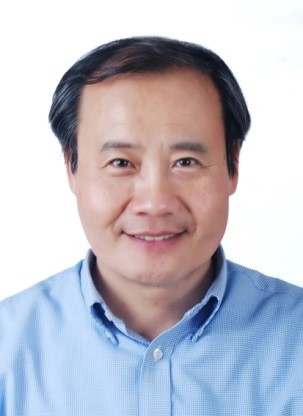Xunming Deng
Solar Cells
Department of Physics and Astronomy, The University of Toledo, Toledo, USA
Email: Xunming.Deng@utoledo.edu
Biography
|
Dr. Deng received his PhD in physics from the University of Chicago in 1990 for a research in amorphous silicon (a-Si) materials. He then joined Energy Conversion Devices, Inc. to develop triple-junction a-Si solar cells and roll-to-roll a-Si production equipment. In 1996, he joined the University of Toledo as a faculty member and built a research group on a-Si solar cells. He served for several years as Team Leader for Multijunction Device Subteam of DOE/NREL-organized US National Amorphous Silicon Research Teams. Dr. Deng created Midwest Optoelectronics, LLC and Xunlight Corporation in Toledo, Ohio, as its Founder, Chairman and CEO, and Xunlight (Kunshan) Co., Ltd, in Kunshan, China, as its Founder and Chairman, to develop and manufacture flexible triple-junction a-Si solar cells, and to develop and manufacture vacuum deposition equipment to make multijunction solar cells and other semiconductor devices. Dr. Deng’s effort in a-Si related research, manufacturing, and entrepreneurship were featured by ABC News, BusinessWeek, CNBC, CNN, The Economist, Forbes, Fox Business, The Guardian, MIT Technology Review, New York Times, Newsweek, Wall Street Journal, among others. |
|
|
Abstract for Presentation
Design Consideration for Multijunction Solar Cells Having Amorphous or Nanocrystalline Semiconductors
Two-terminal multijunction (MJ) structure, utilizing a combination of wide bandgap (WBG) and narrow bandgap (NBG) component solar cells to split solar spectrum, is a desirable way to produce solar cells with high conversion efficiency. Other applications, such as photoelectrodes for photoelectrochemical production of hydrogen, also require a MJ structure to generate a sufficient voltage for direct water splitting. While some MJ devices, such as a-Si solar cells and III-V solar cells, have been well studied and developed over the past decades, many newer solar cells, such as Perovskite solar cells, have been studied extensively recently by many research groups worldwide.
In this paper, we discuss general design considerations for the fabrication of MJ solar cells. Due to the process requirements of the two-terminal MJ devices, not all combinations of WBG/NBW pairs are practical for use in MJ solar cells.
These considerations include the following, as examples. 1) The component solar cell that is fabricated at a higher processing temperature (Tp) needs to be deposited before the component cell fabricated at a lower Tp so that the first deposited layer would not suffer undesirable changes during the subsequent depositions. If the WBG cell is deposited at a higher Tp, a superstrate structure, in which sunlight enters through the “superstrate” during device operation, is preferred. If the NBG cell is deposited at a higher Tp, a substrate structure is preferred. 2) A first-deposited component cell should not experience a chemical change in the growth environment of subsequently deposited layers. 3) The structure, and consequently, the electronic properties, of some amorphous and nanocrystalline materials, such as a-Si and nc-Si, depend on the underlying layers these new films are deposited on and the thickness of these subsequent films.
The performance of the tunnel-junction interface or recombination interface between component solar cells, and the use of certain transparent conducting oxide layer as semi-reflection layer to boost the current of WBG component cells to achieve current matching, shall also be discussed.
Issues related to the design and processing of triple-junction a-Si solar cells on flexible substrates will be discussed to illustrate general design considerations of multiple junction solar cells.
WELCOME TO CHINA TO ATTEND THE ICANS
23-26 August, Nanjing, China
Connect with us:



